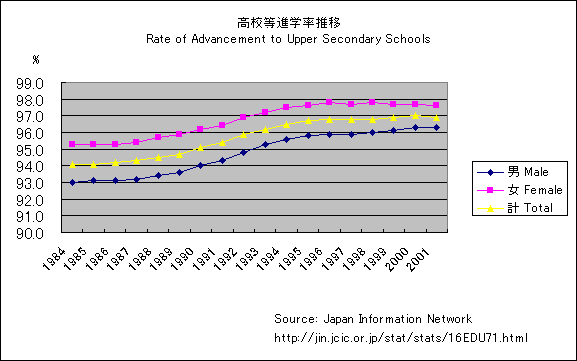High school entrance exams
高校入学試験
こうこうにゅうがくしけん
Admittance to high school is usually determined on the basis of written examination scores and the content of the naishinsho. The naishinsho is a confidential school report on the student's grades and conduct during junior high school submitted to high schools to which students apply for admission. It records grades, data on attitudes and conduct, and achievements in extra-curricular activities.
There is also a system by which high schools admit a certain proportion of new students screened by recommendation rather than by performance on an entrance examination. The criteria of evaluation are a letter from the student's junior high school principals, naishinsho, interview, short essay, and achievements in extracurricular activities such as sports and club activities. Admittance by recommendation includes what is called the sengan or tangan system. High schools admit certain number of students who fulfill given criteria as long as they agree to apply to and enter only that school.
Compulsory education in Japan ends with the third year of junior high school, but 97% of junior high school graduates in 2000 continued their education at senior high schools, five-year training colleges and special schools for persons with disabilities; 0.3% entered special training colleges. High school entrance examinations for third-year junior high students are usually held in January and February. In the case of public schools, high school examination subjects are decided at the prefectural level. The principal subjects are Japanese language/literature, mathematics, English, science and social studies. In the case of private schools, the subjects vary with each school. The number of schools that conduct their own English hearing tests and interviews, for example, is increasing.

|
|